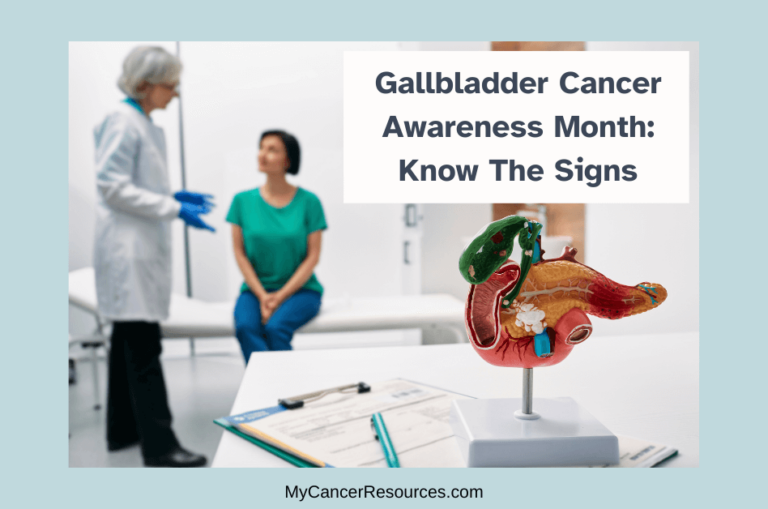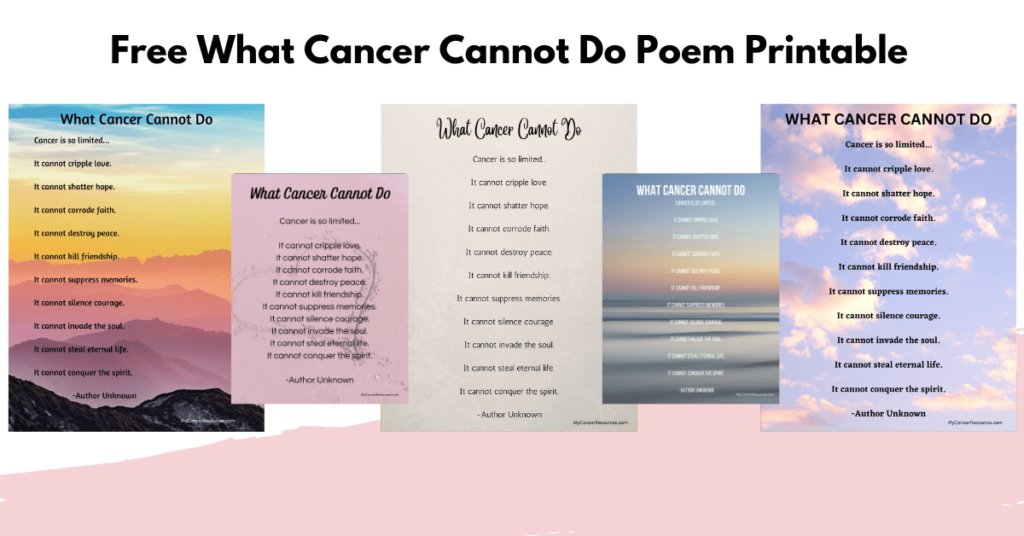
Just as the month of February is Bile Duct Cancer Awareness Month, it’s also Gallbladder Cancer Awareness Month. Both of these parts of the body work together to digest food. Fortunately, gallbladder cancer is a rare disease. Unfortunately, it is often not discovered or diagnosed until it is already in an advanced stage, possibly already spread to other areas of the body.
Here we’ll explore the gallbladder, it’s purpose, risks for and symptoms of gallbladder cancer, and how this rare cancer is typically treated.
I’ll use Gallbladder Cancer Awareness Month to educate and raise awareness so that if someone is having symptoms that they see their doctor for screening right away. That way, if it is gallbladder cancer, it’s hopefully caught in its earliest stages.
What Is the Gallbladder, and What Does It Do?
The gallbladder is a pear-shaped organ that’s hidden underneath the liver. The gallbladder stores bile, which is a liquid created by the liver and transported through the bile ducts to the gallbladder and small intestine. Bile is made to help in the digestion of fats.
This small organ provides an important role in the body, but it is possible to live without it.
Most people in the general population don’t ever think about the gallbladder unless they or someone they know develop gallstones.
Gallstones are tiny crystals that are made up of bile that’s joined with cholesterol and hardened. These crystals can prevent bile from moving in or out of the gallbladder.
Even though gallstones can be common, gallbladder cancer is definitely not.
Gallbladder cancer typically begins in the innermost layers and then spreads out into the muscle and outer layers.
Because of the relatively hidden nature of the gallbladder, tumors can’t be felt during routine physical exams.
Statistics
According to the American Cancer Society, here are a few statistics about gallbladder cancer:
- There will be approximately 4,940 new cases of gallbladder cancer diagnosed in the United States in 2024.
- Women are slightly more likely to develop gallbladder cancer than men.
- More than 2 of 3 people with gallbladder cancer are 65 or older when it is first diagnosed.,
- Only about 20% (1 out of every 5 new diagnoses of gallbladder cancer) is found at an early stage. These diagnoses tend to occur after the gallbladder has been removed due to gallstones.
- There are no blood tests or other screening tests for this type of cancer.
Risk Factors for Developing Gallbladder Cancer
No one knows the exact causes of gallbladder cancer.
While not guaranteed, the biggest risk factor of developing gallbladder cancer is a personal or family history of gallstones.
A family history of gallbladder cancer is also common for new gallbladder cancer cases, but this doesn’t always happen.
Many people with gallbladder cancer fall into the overweight or obese weight categories. Obesity is a known risk factor in developing gallstones, so that might explain that increased risk link.
Other conditions related to chronic inflammation (irritation and swelling) in the gallbladder including:
- Choledochal cysts – These are bile-filled sacs that are connected to the common bile duct, the tube that carries bile from the liver and gallbladder to the small intestine.
- Gallbladder polyps, growths that bulge out from the inner wall of the gallbladder.
- Exposure to industrial and chemical toxins. People working in the textile and rubber industries are at higher risk of developing gallbladder cancer.
- Chronic infection with salmonella, the bacteria that causes typhoid
Signs and Symptoms
Early stages of gallbladder cancer have few, if any signs and symptoms. Symptoms tend to be more noticeable as the cancer grows, which is why most cases aren’t diagnosed until it’s already in a late stage.
Some of the signs include:
- Abdominal pain, especially in the upper right side of your abdomen
- Lumps in the abdomen
- Abdominal bloating
- Jaundice, which is when the skin and the whites of eyes turn yellow)
- Unexplained fever
- Unintentional weight loss
- Nausea
- Dark, tar-looking stools
If you’re having any of these symptoms and can’t explain why they’re happening, reach out to your doctor to be evaluated.
Even if the symptoms are mild, they are too important to be overlooked. Early gallbladder cancer is treated much more successfully than cancer that is more advanced.
Treatment of Gallbladder Cancer
Treatment options for gallbladder cancer depend on how early the cancer was caught. If it’s in an early stage, surgery is often the first choice.
Chemotherapy and radiation are also options for gallbladder cancer that is localized, meaning it’s stayed in it’s local area and hasn’t spread to other parts of the body that are further away.
Additional treatments being evaluated include hyperthermia therapy, which I talk a bit more about in this article about sauna therapy and cancer, and immunotherapy, which boosts the immune system to better attack cancer cells, while leaving healthy gallbladder cells alone.
Conclusion
Since gallbladder cancer can be difficult to diagnose, it’s important to know common risk factors and see which, if any, apply to you. If you’re having any symptoms, and especially if you’re at a higher risk, you should be seen right away.
Don’t put off visiting your healthcare providers – it could make all the difference in being diagnosed early, having the most treatment options available to you, and improve the quality of your life.



